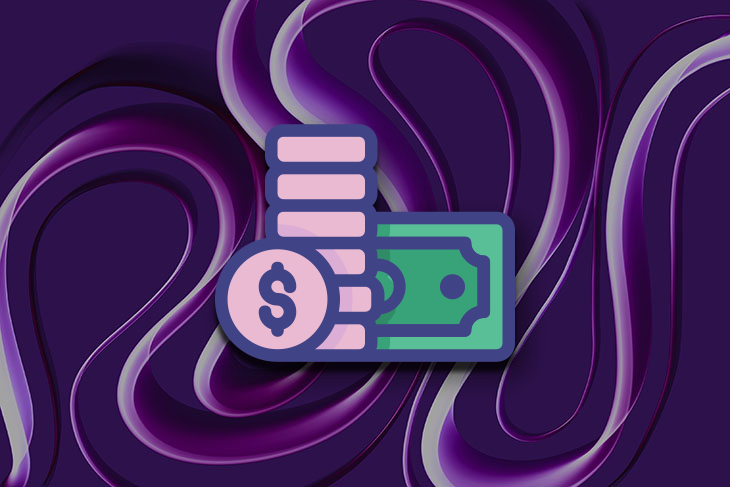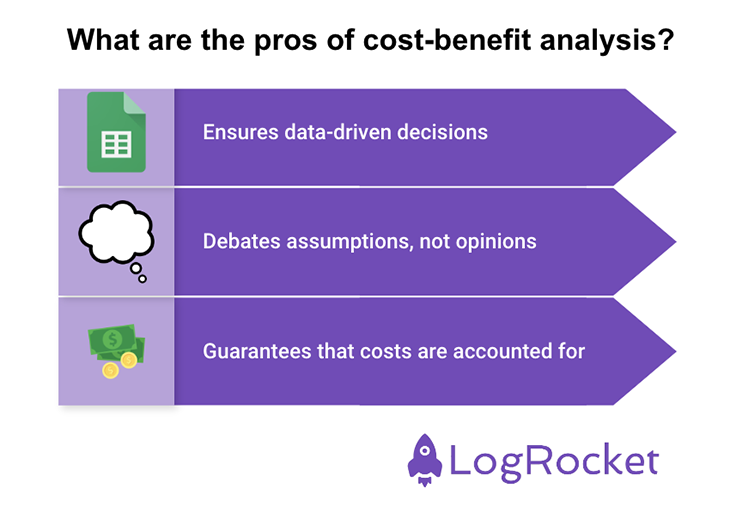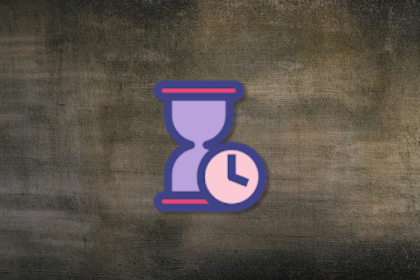The two hardest parts of a product manager’s job are prioritizing what to work on and handling new ideas when they (inevitably) come up. Every product manager knows the stress of an executive coming to you to evaluate a new idea that requires changing your team’s plan. While it’s tempting to try to stay the course, you may miss out on important opportunities.

Cost-benefit analysis is a useful tool to help make these decisions more objective. In this article, we’ll learn about cost-benefit analysis, the steps to performing a cost-benefit analysis, and go through an example to help it all make sense.
Cost-benefit analysis is a longstanding technique used across industries to evaluate whether to invest or take on new projects.
In cost-benefit analysis, you first calculate the cost of a project — this can be the cost of labor to do the work or the materials or services required to make it happen. You then calculate the benefit of the project, representing the value it will generate. This could be measured as profit, new users, or improvement to another key performance indicator.
When you have a rough estimate of both the costs and benefits, you then subtract the costs from the benefits to see which will yield more incremental value.
There are several benefits to using cost-benefit analysis in product management:

Now that we know why cost-benefit analysis is beneficial, let’s go through a simple example of how to conduct a cost-benefit analysis.
Let’s say our product is an e-commerce site and our team is working on some checkout improvements we believe will boost conversion rate. Our CEO approaches us to consider a new project to partner with another company that will sell their products on our platform. This opportunity is exciting, but it requires a time-intensive integration. How do we decide whether to stop what we are working on to pursue it?
Ideally, the existing checkout project already has a cost-benefit analysis you can refer to from when it was prioritized. For this example, we will assume we are starting from scratch:

For most tech projects, the bulk of the cost is an employee’s time. A good first step is to estimate how many days or weeks of engineering time it will take and assume a certain cost per day.
When I’ve done cost-benefit analysis in the past, I’ve used the assumption of $650 per engineer’s day, based on median salary.
Let’s say the checkout optimization project will take three weeks (or 15 days) of one engineer’s time to accomplish. This puts the cost at $9,750. The partnership project will take 12 weeks of one engineer’s time to finish. This puts the total cost for the engineering time at $39,000.
Now, add in any other costs. For example, let’s assume the partnership will require some additional third-party software to integrate that has a licensing cost of $20,000 per year. The checkout optimization project has no additional costs.
This makes the total cost of the checkout project $9,750 versus the total cost of the partnership project which is $59,000:
| Cost | Benefit | Net value | Time investment | |
| Checkout project | $9,750 | 2 weeks | ||
| Partnership project | $59,000 | 12 weeks |
Cost is only one side of the picture. The other important factor is benefit. How much value will these projects drive?
Let’s say the checkout optimization project will increase the conversion rate from cart to checkout by one percent, which results in $100,000 in incremental profit each year.
The partnership project is expected to produce $1,500,000 in revenue which after profit sharing with the partner will yield $150,000 in profit in year one with an expectation that profits will grow in the following years.
There may be some intangible costs, such as employee morale or first mover advantage, to get to market. Make an assumption about the dollar value of these costs so you can include them in your analysis. In this case, we will assume there’s a strategic marketing and awareness benefit to the partnership worth an additional $50,000 in profit.
In addition, given the expectation of profit growth for the partnership project, it may be useful to model future year expectations. For the purposes of this analysis, we will limit the cost-benefit analysis to year one:
| Cost | Benefit | Net value | Time investment | |
| Checkout project | $9,750 | $100,000 | 2 weeks | |
| Partnership project | $59,000 | $200,000 | 12 weeks |
Now that we have both sides of the picture — the costs and the benefits — we can compare the value:
| Cost | Benefit | Net value | Time investment | |
| Checkout project | $9,750 | $100,000 | $90,250 | 2 weeks |
| Partnership project | $59,000 | $200,000 | $141,000 | 12 weeks |
Using our assumptions, we estimate that the checkout project will generate $90,250 in profit ($100,000 in benefits minus $9,750 in cost) after a two-week engineering investment.
The partnership project will generate $141,000 in profit ($150,000 direct + $50,000 from marketing/awareness – $39,000 – $20,000) after a 12-week engineering investment.
The cost-benefit analysis shows that the checkout project is likely a quick win that can yield benefits to the company quickly, but if we make a bigger investment in the partnership, it will yield a higher net value.
It is helpful to do some scenario planning to understand how the underlying assumptions affect the cost-benefit analysis.
If the checkout project can double its conversion lift to two percent, it now generates a higher net value for the company than the partnership project.
If the partnership project can double profits in year two while the checkout project gains are constant, then the benefit of the partnership project is much higher. However, in this scenario, we may need to model additional costs as well such as a dedicated account manager.
Scenario planning can get ahead of questions and debates that are likely to come up and allow you to easily model and show what would happen if you change your assumptions.
Cost-benefit analysis is a valuable tool to understand the trade-offs and compare projects. However, it’s not enough to just do the analysis. You now need to make a recommendation based on the results.
It is important to take into account the company’s strategy, goals, and constraints when making a decision. It’s not always the case that the highest net value project is the right one to pursue. The company may need a quicker win and be willing to sacrifice some of the potential profit.
The goal of the cost-benefit analysis is to give a better picture of the trade-offs that can drive prioritization and resourcing decisions.
Cost-benefit analysis is a useful tool for product managers in evaluating trade-offs, both in the initial prioritization of their roadmap and when new ideas come up.
Ultimately, the decision on what is the right thing for the company and team will depend on many factors, but cost-benefit analysis will help provide objective data, assumptions, and scenarios to support the decision-making process.
Featured image source: IconScout
LogRocket identifies friction points in the user experience so you can make informed decisions about product and design changes that must happen to hit your goals.
With LogRocket, you can understand the scope of the issues affecting your product and prioritize the changes that need to be made. LogRocket simplifies workflows by allowing Engineering, Product, UX, and Design teams to work from the same data as you, eliminating any confusion about what needs to be done.
Get your teams on the same page — try LogRocket today.

Great product managers spot change early. Discover how to pivot your product strategy before it’s too late.

Thach Nguyen, Senior Director of Product Management — STEPS at Stewart Title, emphasizes candid moments and human error in the age of AI.

Guard your focus, not just your time. Learn tactics to protect attention, cut noise, and do deep work that actually moves the roadmap.

Rumana Hafesjee talks about the evolving role of the product executive in today’s “great hesitation,” explores reinventing yourself as a leader, the benefits of fractional leadership, and more.